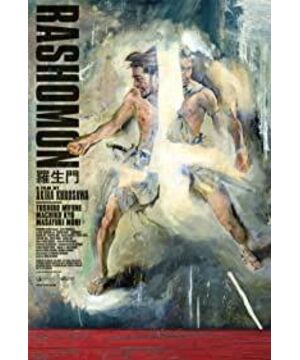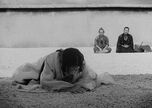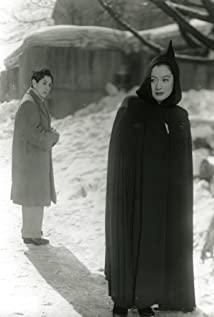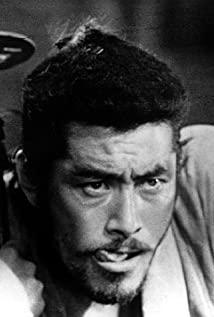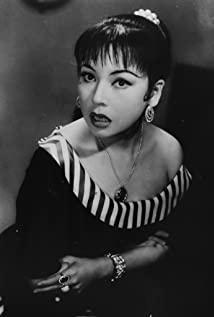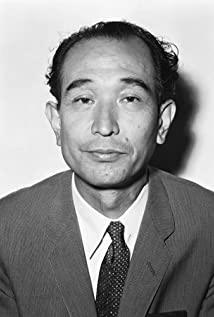The film "Rashomon" is adapted from the novel "In the Shinobamboo Bush" by the Japanese writer Akutagawa Ryunosuke. The film is well known, and the specific plot will not be repeated. This article will specifically explore the aspects of photography, editing, scene scheduling, performance, story script, etc. Akira Kurosawa - the techniques and ideas that Shakespeare of the cinema uses in his films.
one. Photography
1. The bold innovation of shooting the sun from an elevation angle
Akira Kurosawa once said in his autobiography "The Oil of Toads": "Another important problem with this work is that because the light and shadow in the forest have become the keynote of the whole work, Therefore, how to catch the sun that creates light and shadow becomes a problem." Akira Kurosawa, who has always been enthusiastic, made this decision: shoot the sun directly. The shadows of trees and the light source of the sun falling on people are shot directly with the front and back shots.
At the time, it was a taboo in cinematography, and it was even thought that there was a danger of burning the film by focusing the film with sunlight through the camera. But it turned out that he succeeded, once again confirming that outstanding people often dare to take the first step that is forbidden. The mottled tree shadows in the lens and the strong sunlight of the sun set off the wonderful picture of the lost people's hearts vividly. So much so that the Venice Film Festival later called this breakthrough "the first entry of the camera into the forest". Akira Kurosawa also said in his autobiography that it is "worthy of a masterpiece of monochrome photography in the world".
2. The stark contrast between mobile photography and fixed lenses
There are two picture frames in the film, the first picture frame is where the court of the picket office is located, and the second picture frame is the place where the story takes place, "Rashomon". In front of Rashomon, the camera positions and angles are flexible, while in the courtroom it is shot from a fixed camera, creating a stark contrast between the two frames.
Also outside of the two picture frames is the location of a major accident: the jungle. In the jungle we can see a lot of sports photography combined with stationary photography. And the themes expressed are different: in Tajomaru's narration, the photography style emphasizes the effect of motion, and Tajomaru occupies the main body of the picture in most cases, and he is shaped in line with Tajomaru's boasting about himself in his speech. He became an arrogant, romantic and childish character.
In Masha's narrative, the use of the over-the-shoulder camera from the perspective of the samurai makes a sharp contrast in the size of the area occupied by the two on the screen, implying that Masha was bullied by the robber at this time. Desperate mood when husband despised.
The large number of close-up shots at the end is suffocating, and it strongly expresses a woman's inner weakness and panic.
In the last paragraph of the woodcutter's narration, since he is not the party concerned, the use of the lens has an objective perspective, and the three-person lens and panoramic lens are mostly used for performance. The "internal montage" of the scene scheduling to maintain the integrity of the time and space of the image through these techniques was very precious and pioneering at the time.
two. Scene Scheduling
1. The use of close-up shots
We all know that early Japanese films used more panoramic and long-range shots. This is because early Japanese films still cannot escape the reality of being a "dramatic complement". Some Japanese film directors of the same period as Akira Kurosawa also deliberately used panoramas to shoot films, combining characters with the environment, thereby highlighting the tendency of realism.
In Kurosawa Akira's films, especially "Rashomon", the director's focus is on the word "human heart". The incomprehensible and unpredictable nature of the human heart relies more on close-up shots of facial expressions. Akira Kurosawa is also a director who has a great interest in the human heart, and he is not simply framed by realism or existentialism. He is like a prism, and any radiant label affixed to him will be decomposed and more ambiguous by him. In this film, close-ups, close-ups, and even subtle pan shots are used to capture the psychology of the characters in the film in every possible way.
2. The composition design of a large number of relationship shots
If we calm down and pull the film, we can see that there are relationship metaphors in many shots in "Rashomon", such as the following examples:
At the beginning of the film, the monk always It is the highest height of the characters in the picture. Whether it is a shot of three people or two people together, it symbolizes that the monk's belief in human beings occupies the commanding heights of morality.
An over-the-shoulder camera shot of the handyman, which reflects the "torture" state of the handyman to the farmer, the dominant position of the handyman's "sexism" towards people in the debate, and the status of the handyman's villain and the farmer's guilt at a glance No surplus.
The real sand fell to the ground, shot from an ultra-low angle under the robber's crotch, plus the perspective relationship of the front, middle and rear scenes, showing the relationship status and inner conflict of the three people at this time.
And so on, the list goes on. In fact, this is a method of photographic narrative, and Akira Kurosawa uses this method as a model. While restoring the authenticity of the space in depth, it also adds dramatic conflict to the shots.
three. clip
The film uses a large number of mobile photography and fixed shots in the shooting mode, which has high requirements on the editor. What the film finally presents to us is a smooth and natural, smooth and clear cut. And in Rashomon, there are also quick cuts like Lucas' Star Wars, such as the samurai and the robber fighting, the robber and the woman in the chase scene, and so on. The speed of editing, the strong dramatic conflict within the shot, and the acting skills in place make the audience dizzy, and the rhythm is so fast that people don't even notice it.
In addition, the film cuts time by fading in and out and flashing back to express the passage of time. This editing method is also superb.
Four. The performance
may be because the characteristics of Japanese film actors themselves are difficult to get rid of, so the acting skills of the actors in this film have always been dramatic. But every actor did a great job. Coupled with some lines that are deeply embedded in the native Japanese background culture, perhaps this is the reason why the film cannot be understood by most Chinese audiences. The 1950s was the golden age of Japanese cinema, and during this period, Japanese cinema was on the rise. More than 20 years ago, Japanese films were still shrouded in the shadow of drama, and a few silent films needed a narrator called "mao shi" to be narrated by the audience. Therefore, at this stage, Japanese films are experiencing a period of separation from drama, so dramatic performances and even staged shots are still inevitable.
But this sense of separation between drama and reality has brought a fresh feeling to the Western film industry. So much so that some movies even deliberately imitated the dramatic stage set and scheduling in "Rashomon" for shooting, so Akira Kurosawa unknowingly completed a "breakthrough under limitations".
Five. After watching
Many people said the film was critical, criticizing the selfish part of human nature. I don't think so. In the film, even the kindest common woodcutter makes selfish mistakes, and I don't think Kurosawa has the emotional inclination to flog selfish behavior in this film. Instead, he looks down on all living beings like a god, because he knows that when he is born as a human being, it is inevitable to get rid of the bondage of the flesh, and it is difficult to escape the seven inherent sins. A famous philosopher once said that tragedy happens not because one of the two parties is wrong, but because both are right. When reality has become a stumbling block in our lives, who can escape this deserved punishment? You can only choose to be your true self. Maybe each of us has a part of selfishness, so does Akira Kurosawa, and he clearly knows that he can't escape, so in the film, he used the monk's mouth to point out a point to himself, to us, and to the general public. Road: Although we know that there is an unspeakable dark side in human nature, don't give up your confidence in human beings, because the darkness behind you is because there is sunshine in front of you.
View more about Rashomon reviews


